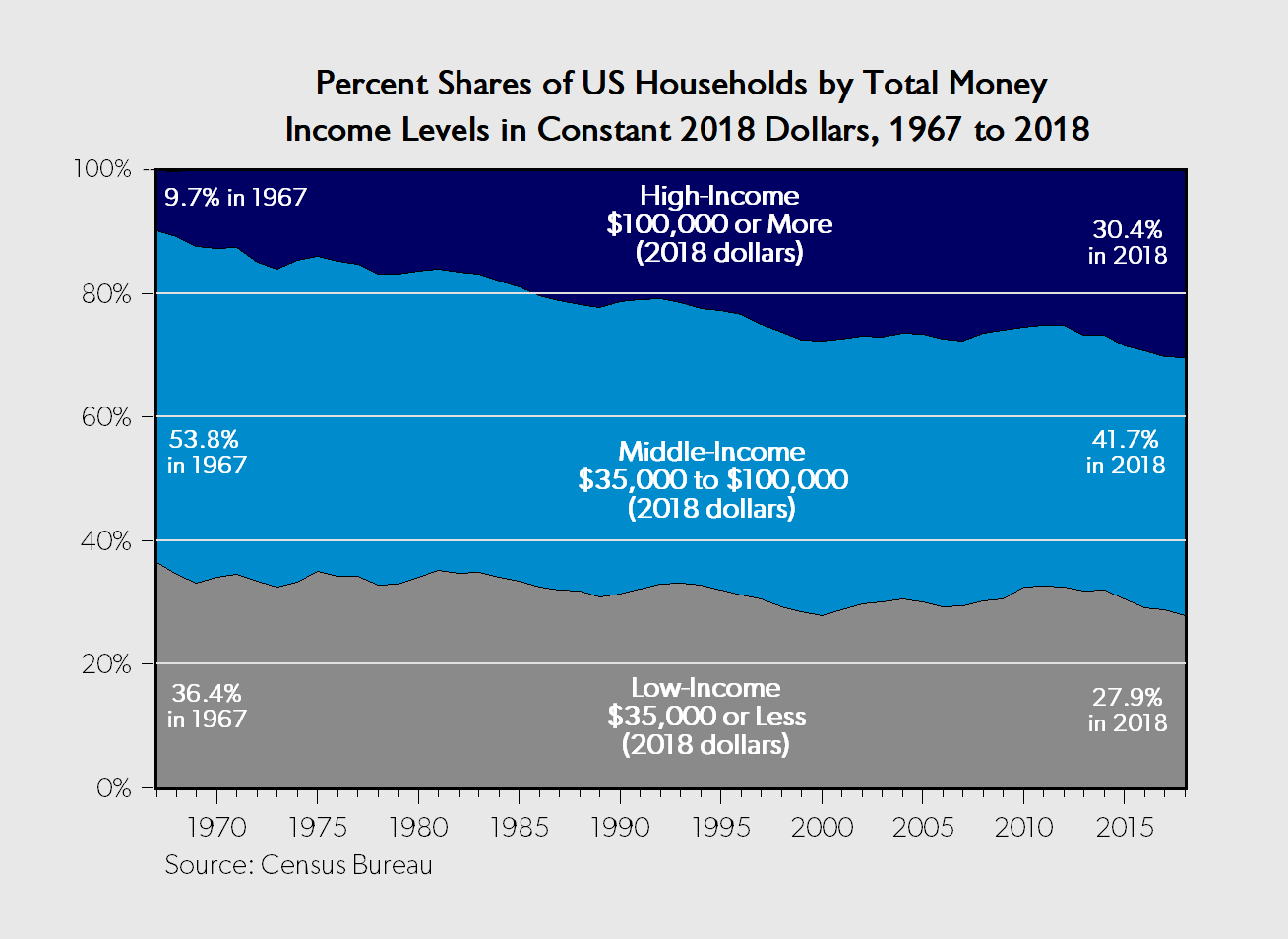The most recent census report on U.S. household income contained some fundamental good news that should be celebrated. Stated in constant 2018 dollars and including all forms of income, the shares of wealth heading toward high-income, middle-income, and low-income families have changed dramatically. Since 1967, the share of high-income households has grown rapidly while the middle-income share has become smaller. Meanwhile, the low-income share and the number of people counted in poverty has fallen, too.
Despite what you may be hearing, the Great American Bread Machine is still baking bread.
All Americans, even those offering economic fixes and seeking the 2020 presidential nominations of their parties, have something to smile about. These happy results cannot be claimed as the work of one president or one party. We are talking about a decades-long process that cuts across all kinds of political action.
In any case, America cannot be described as a place where the rich only get richer and the poor only get poorer. Nor can one say that income inequality has reached crisis proportions, as some of those politicians are inclined to say. The evidence, which speaks well for the operation of our market economy, suggests strong economic mobility.
These results are shown graphically in the below chart developed by American Enterprise Institute economist Mark Perry. Notice that in 1967, just 9.7% of U.S. families were included in the high-income group. In 2018, 30.4% were high-income households. And in 1967, some 53.8% of all households were counted in the middle-income group. In 2018, the middle-income share included 41.7% of all households. Finally, take a look at the low-income category. The share fell from 36.4% to 27.9%.
The major change here is the shift of the share of middle-income households to the high-income category.

While the income shift has occurred, higher-income Americans have become far more responsible for funding government. For example, between 1979 and 2016, the share of tax revenue paid by the highest income quintile rose from about 50% to 70%, while the share paid by the lowest quintile slipped toward zero. More households paying more taxes means that the federal deficit, as large as it may be, would be a lot larger were it not for the growth of higher-income households.
Wouldn’t it be refreshing if the outspoken candidates for the highest office in the land would acknowledge that not everything is out of kilter with the economy? That not everything is broke and needs fixing?
Wouldn’t it be grand to hear a well-informed debate about what’s right in America, and how the Great American Bread Machine is still baking bread? We aren’t perfect, of course, and it would be ideal if more low-income households moved into the middle- or high-income categories more quickly. Still, let’s learn from this positive experience instead of simply condemning capitalism and leaning toward socialism.
It’s time to look at the data, leave the rhetoric at the door, and celebrate progress.
Bruce Yandle is a contributor to the Washington Examiner’s Beltway Confidential blog. He is a distinguished adjunct fellow with the Mercatus Center at George Mason University and dean emeritus of the Clemson University College of Business & Behavioral Science. He developed the “Bootleggers and Baptists” political model.

